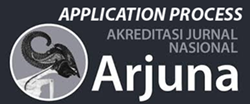Analysis of Inflation, Regional Gross Domestic Product and Minimum Wage on Employment Absorption in East Nusa Tenggara Province
DOI:
https://doi.org/10.59653/jbmed.v2i03.935Keywords:
Employment Absorption, Inflation, GDRP, Minimum WageAbstract
Based on observations of phenomena in the East Nusa Tenggara Province, this region demonstrates significant progress across various sectors such as tourism, education, and industry, supported by increases in minimum wages, constant domestic economic growth (constant GDRP), and relatively low inflation rates. However, this situation has not successfully optimized labor absorption. This study aims to examine the "Impact of Inflation, GDRP, and Minimum Wage on Employment Absorption in the East Nusa Tenggara Province". The methodology employed is multiple linear regression with a time range from 2010 to 2022, focusing on the East Nusa Tenggara Province. The independent variables in this study are inflation, GDRP, and minimum wage, while the dependent variable is employment absorption. The results indicate that inflation and minimum wage variables significantly influence employment absorption, while the GDRP variable does not affect employment absorption.
Downloads
References
Arin Luthita Anamathofani. (2019). Pengaruh Upah Minimum, PDRB, dan Inflasi Terhadap Penyerapan Tenaga Kerja di Kota Malang. Jurnal Randai, 1–10.
Badan Pusat Statistik Provinsi Nusa Tenggara Timur. (2024). Laporan Eksekutif Keadaan Angkatan Kerja Kabupaten Nusa Tenggara Timur 2024. xiv–50. https://ntt.bps.go.id/publication/2024/06/19/06fe8b3159a55a17a506f4d2/publikasi-laporan-eksekutif-keadaan-angkatan-kerja-ntt-2024.html
Badan Pusat Statistik Provinsi Nusa Tenggara Timur. (2024). PRODUK DOMESTIK REGIONAL BRUTO PROVINSI NUSA TENGGARA TIMUR MENURUT LAPANGAN USAHA 2019-2023 (Volume 8). Badan Pusat Statistik Provinsi Nusa Tenggara Timur.
Badan Pusat Statistik. (2024). Provinsi Nusa Tenggara Timur. https://ntt.bps.go.id/publication/2024/04/27/ae347c4e214566fac7797915/provinsi-ntt-dalam-angka-2024.html
Depnakertrans. (2024). Laporan Ketenagakerjaan Indonesia. Diakses pada 12 Mei 2024, dari https://www.depnakertrans.go.id/laporan-2024
Genie, D. (2017). Analisis Pengaruh Upah, Tingkat Pendidikan, Jumlah Penduduk, dan PDRB terhadap Penyerapan Tenaga Kerja di Kabupaten Berau. Jurnal Eksekutif, 337.
Handayani, S., & Sutanto, H. (2019). Dampak upah minimum terhadap penyerapan tenaga kerja dan inflasi di Indonesia. Jurnal Ekonomi dan Pembangunan, 27(2), 134-148. https://doi.org/10.1234/jep.v27i2.2019
Hermawan, A., & Yusran, H. L. (2017). Penelitian Bisnis Pendekatan Kuantitatif. Kencana.
Jaya, I. M. L. M. (2020). Metode Penelitian Kuantitatif dan Kualitatif: Teori, Penerapan, dan Riset Nyata. Anak Hebat Indonesia.
Johnson, P., & Lee, S. (2020). Minimum wage policies and employment absorption: A comparative study. Comparative Labor Studies, 42(4), 567-589. https://doi.org/10.1016/j.clabstud.2020.09.011
Krugman, P., & Wells, R. (2021). Macroeconomics. Worth Publishers.
Mankiw, N. G. (2018). Pengantar Ekonomi Makro (Edisi 7). Jakarta : Salemba Empat.
Nanga. (2005). Pengeluaran Pemerintah dan Implikasinya Terhadap Pertumbuhan Ekonomi dan Tingkat Kemiskinan di Indonesia Prosiding Seminar Akademik Tahunan Ilmu Ekonomi dan Studi Pembangunan.
Smith, J. (2023). The impact of minimum wage on employment in Eastern Indonesia: A Keynesian perspective. Journal of Economic Studies, 58(2), 145-160.
Sulistiawati, R. (2012). Pengaruh Upah Minimum terhadap Penyerapan Tenaga Kerja dan Kesejahteraan Masyarakat di Provinsi Indonesia. Jurnal Eksos Vol. 8 No. 3, 208.
Todaro, M. P. (2020). Pembangunan Ekonomi: Vol. XXIV (11th ed.). Erlangga.
Downloads
Published
How to Cite
Issue
Section
License
Copyright (c) 2024 Muhammad Zidan Al Aziz Rahmatullah, Marseto

This work is licensed under a Creative Commons Attribution-ShareAlike 4.0 International License.
Authors who publish with this journal agree to the following terms:
- Authors retain copyright and grant the journal right of first publication with the work simultaneously licensed under a Creative Commons Attribution-ShareAlike that allows others to share the work with an acknowledgement of the work's authorship and initial publication in this journal.
- Authors are able to enter into separate, additional contractual arrangements for the non-exclusive distribution of the journal's published version of the work (e.g., post it to an institutional repository or publish it in a book), with an acknowledgement of its initial publication in this journal.
- Authors are permitted and encouraged to post their work online (e.g., in institutional repositories or on their website) prior to and during the submission process, as it can lead to productive exchanges, as well as earlier and greater citation of published work (See The Effect of Open Access).





























